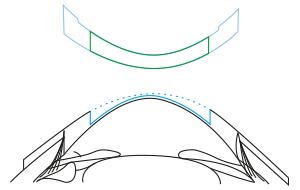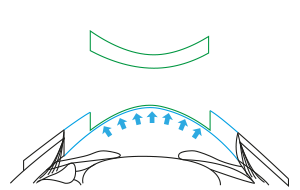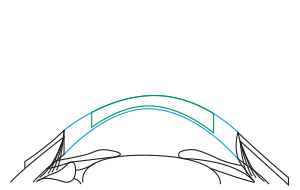CLAT – Corneal Lamellar Ablation for Transplantation
Laser-driven Corneal Lamellar Transplantation.
CLAT (Corneal Lamellar Ablation for Transplantation) is designed to perform laser-assisted customized lamellar corneal transplantations and to optimize the quality of the host-donor interface.
CLAT allows the planning of an ideal receiving bed with uniform thickness and of a customized donor lamella to fit the patient’s bed in order to eliminate the irregular residual thickness of the surgical bed and thus, granting a better quality of vision.
CLAT allows to overcome the risk of transplant’s rejection and the limited life’s expectancy of the transplant, which is associated to penetrated keratoplasties.
Unlike lamellar keratoplasties, which are manually executed by the surgeon or alternatively by using a microkeratome or a femtosecond laser, CLAT grants the execution of a fully automated procedure allowing a safe creation of a customized receiving bed with uniform thickness and the customization of the donor cornea, to finally achieve a post-op corneal lamellar transplantation having a normalized thickness, thus eliminating all residual irregularities and yielding superior resultant corneal optics.

The receiving bed of any individual patient is calculated as the intersection of the pachymetry’s map and the Ideal Corneal Bed. This customized volume of tissue is ablated by the iRes™ laser.

The new receiving bed has now a uniform thickness which behaves like a membrane with no cross-sectional rigidity.

The donor lenticule is customized and positioned on the receiving bed. The lamella is then secured with conventional sutures. A peripheral pocket might be created by the surgeon to further enhance the mechanical properties of the implant.



